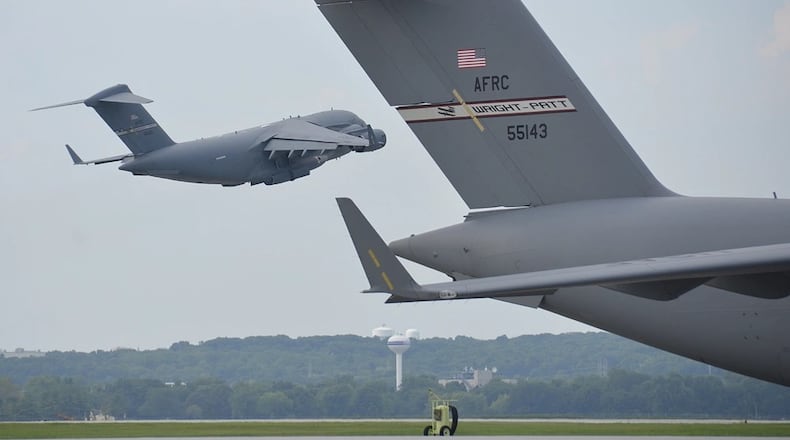Last year, Amir Mott, deputy director of the 88th Civil Engineer Group, told this newspaper that Wright-Patterson’s runway was constructed in 1947 with a concrete landing surface. It has seen decades of successful service, Mott said.
But “the condition of the runway has reached critical condition, necessitating ongoing maintenance and repair, and (it) is in need of replacement,” Mott said last October.
The Senate bill also has $30 million for a human performance laboratory at Wright-Patterson, along with $15 million to address the runway and $2.8 million for what the senator described as “AI strategic planning for the super computer center.”
Husted recalled voices urging attention to Wright-Patterson’s runway while he served as Ohio’s lieutenant governor. Gov. Mike DeWine appointed Husted to serve in the Senate in January, after J.D. Vance, the previous holder of that seat, was elected vice president as Donald Trump’s running mate in November 2024.
“They said, ‘Hey, they’re not going to have a runway out there before long,” Husted said. “It’s deteriorating, and if you don’t have a flight line, how can you be in the Air Force?”
The key will be keeping these Wright-Patterson-focused dollars in any spending bill that reconciles House and Senate plans — and avoiding a continuing resolution.
Air Force and military leaders generally detest such resolutions, also called “CRs.” CRs are stopgap measures to fund the government for a limited time, typically locking the Department of Defense into a previous year’s level of funding all while prices are increasing and military threats are evolving.
“I will choose to take the optimistic perspective on that,” Husted said when asked about the likelihood of another CR. “Right before we left we passed about 80% of the appropriations budget to keep the government running through the Senate on a bipartisan basis. So I’m hopeful that will happen.”
About the Author


